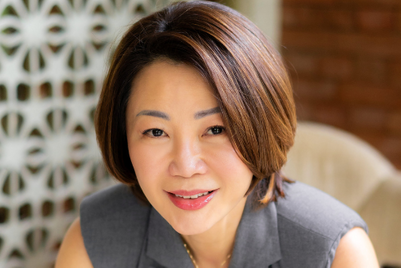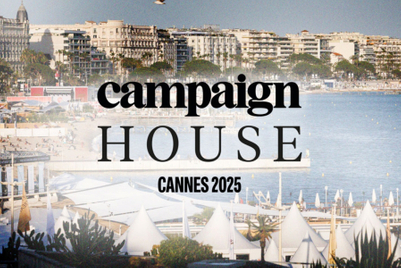.jpg&h=570&w=855&q=100&v=20250320&c=1)
In a world where a handful of loud voices can sway global policy and put the future of diversity in a swirl, it’s especially heartening to see Cannes Lions open its doors to new leaders like Enkhbayasgalan Tungalag. Based in Ulaanbaatar, Tungalag is CEO of KMG Creative Group, a holding company spanning marketing, media, technology, and brand consulting, and now, Mongolia’s first-ever juror at Cannes, shortlisting in the Outdoor category.
“It’s a humbling milestone, for me and for the Mongolian creative community,” Tungalag shared with Campaign ahead of the Lions festival. “I carry the voice of emerging markets and a generation that believes creativity can help solve social challenges."
Mongolia’s marketing industry is still young. It's shaped by modest budgets but big ambitions, and a resourcefulness rooted in centuries of nomadic storytelling. Tungalag’s debut as a juror echoes the sentiment that “creativity is the world’s most democratic resource,” and the burst of brilliance can spark just as easily in a yurt camp as in Madison Avenue or Shibuya.
Read his full interview where he shares what it means to represent his country, what he’s looking for in this year’s Outdoor work and why creative excellence should be recognised wherever it emerges.
First Mongolian on a Cannes jury! Congratulations, and how does that sit with you? Do you feel the weight of expectation, or is it just another day at the office?
It’s a humbling milestone, for me and for the Mongolian creative community. I do feel a sense of responsibility, though it feels more like purpose than pressure. Being the first Mongolian jury member at Cannes Lions means helping open the door wider for others. I come to the table knowing I represent more than just myself. I carry the voice of emerging markets and a generation that believes creativity can help solve social challenges. I wanted to bring a Central Asian and nomadic perspective to a global stage, and I am proud that Mongolia is now part of the Cannes Lions story. We are no longer watching from the sidelines. We are stepping onto the world stage.
Outdoor advertising is constantly evolving, particularly with the integration of digital technology, artificial intelligence, and data-driven creativity. From your perspective, what defines truly breakthrough work in the Outdoor category in 2025?
In 2025, breakthrough Outdoor work must stop people in their tracks, whether physically, emotionally, or digitally. The integration of AI and data allows us to target smarter and personalize better, but technology alone doesn’t make something unforgettable. Whether it's a powerful print in a rural town or a hyper-targeted digital billboard in Singapore, if it stirs curiosity, evokes emotion, or sparks cultural conversation, it's achieving what great Outdoor should.
Mongolia’s ad market is still emerging compared to regional powerhouses. How do you think your unique local insights and cultural lens will influence your judging approach, and what do you hope to bring to the jury room that others might miss?
Coming from an emerging market like Mongolia gives me a clear view into how powerful creativity can be when resources are limited. In our market, budgets are modest but ambitions are bold. We have to work harder to make our messages matter. That resourcefulness, combined with Mongolia’s deep cultural roots and storytelling heritage, gives me a unique lens. I hope to bring an eye for authenticity, lateral thinking, and work that punches above its weight. That’s what I tried to honor while shortlisting. I looked for work that may not shout the loudest but stays with you the longest.
Mega festivals like the Cannes Lions are often criticised for favouring big-budget, global campaigns. As a juror from a smaller market, what are you looking for when it comes to recognising work from less-represented regions or challenger brands?
Global campaigns and work from less-represented regions both deserve recognition, but for different reasons. Big-budget campaigns often set technical benchmarks. But work from smaller markets shows us the future of storytelling, how creativity adapts, survives, and reinvents itself under constraint. As a juror, I look for clarity of purpose and cleverness of execution. I believe creativity is the world’s most democratic resource. So I look for the soul in the work, not just the scale. It’s not about how big the campaign was, but how bold the thinking was. Did it take a risk? Did it challenge norms? Did it move people or shift behavior with limited means? Great creative from underrepresented regions often tells stories that global brands can’t. It reflects raw truth and ingenuity because it has to. Awards like Cannes Lions should not only celebrate polish. They should reward progress, bravery, and purpose.
As someone who has built a creative business in a fast-changing environment, what trends or themes do you expect to see dominate the Outdoor submissions this year? Are there any industry conversations or shifts you’re hoping to see reflected in the work?
We’re seeing a return to real-world interaction. Tactile experiences, hyperlocal context, sustainability-first narratives, and campaigns that earn public attention instead of buying it are becoming more common. I also noticed a deeper emotional intelligence in recent work. Brands are no longer speaking at people, they are inviting them into stories. With the rise of generative AI, the creative challenge is to balance technology with emotion, and context with clarity. Sustainability will be a dominant theme, not just in message but in execution. We will see more recycled materials, carbon-neutral installations, and purpose-led messaging. Outdoor is becoming a platform for cultural intervention, not just brand exposure. The best work will make people feel seen, challenge norms, and trigger action in unexpected places.
What advice would you give to emerging Mongolian creatives and agencies who aspire to make their mark internationally, both on the awards circuit and in the broader industry?
Build your work with global ambition but local depth. Be original, not just different. Your heritage, your resourcefulness, and your unique worldview are your strengths. Mongolia has a rich cultural fabric and a growing creative voice. Don’t wait for permission. The world will not hand you a platform. You have to build your own. Always aim to learn from the best and lead with local soul. Awards like Cannes might seem distant, but they start with a local idea done brilliantly. Keep building your craft. Collaborate across borders. Submit your work. Bring something the world hasn’t seen before: yourself. International recognition will follow if you lead with courage.
What’s the toughest truth about our industry that you wish the global stage would recognise?
That creativity is not limited to New York, London, or Tokyo. Brilliance does not belong only to big cities. It lives in yurt camps, mining towns, Ulaanbaatar, Dornod, Bayan-Ölgii, and in the hands of kids drawing billboards in notebooks. The toughest truth is that great work from smaller markets often goes unseen, not because it lacks creativity but because it lacks visibility. I hope platforms like Cannes Lions continue to evolve. They should not only reward excellence, but also work to discover and nurture it, especially in the places where it is hardest to grow.


.jpg&h=334&w=500&q=100&v=20250320&c=1)
.jpg&h=334&w=500&q=100&v=20250320&c=1)
.jpg&h=334&w=500&q=100&v=20250320&c=1)



.png&h=334&w=500&q=100&v=20250320&c=1)

.png&h=334&w=500&q=100&v=20250320&c=1)








